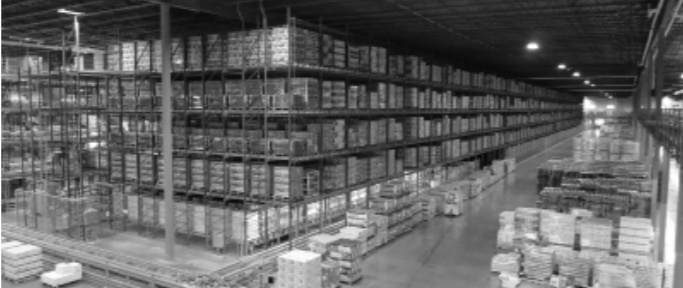 From SKU proliferation, to e-commerce, to
increasing customer demand, changes and
trends in today’s supply chains have significantly
complicated the warehousing industry. Now, as
warehousing organizations look for new ways to
stay ahead of these shifts and challenges, many
are embracing automation technology to drive
new efficiencies.
From SKU proliferation, to e-commerce, to
increasing customer demand, changes and
trends in today’s supply chains have significantly
complicated the warehousing industry. Now, as
warehousing organizations look for new ways to
stay ahead of these shifts and challenges, many
are embracing automation technology to drive
new efficiencies.
However, when it comes to automating their warehouse, some organizations are unsure where to start. Some have relied on the same facilities, the same processes and the same homegrown systems for years. To help jump start your efforts, here are five strategies for optimizing warehouse operations with automation:
1.Retrofit Your Existing Facility with a High-density AS/RS
Introducing a high-density automated storage and retrieval system (AS/RS) to your existing facility will instantly improve your cube utilization. You’ll be able to store more product in the same (if not smaller) amount of spac options that produce little ROI. Often, an AS/ RS can minimize your overall building footprint by up to 50%, when compared to a conventional warehouse. At the same time, you’ll better-position your facility for growth and have room to accommodate new SKUs.e, and eliminate the need for new construction or off-site storage-costly options that produce little ROI. Often, an AS/ RS can minimize your overall building footprint by up to 50%, when compared to a conventional warehouse. At the same time, you’ll better-position your facility for growth and have room to accommodate new SKUs.
2.Consolidate Disparate Facilities
Because an AS/RS allows you to better utilize space and store more inventory, consider consolidating several smaller, disparate warehouse facilities. By combining operations from remote locations into a centralized warehouse, you’ll reduce costs associated with additional labor, resources and energy consumption. Plus, you will no longer face the logistical challenge of aggregating products residing in different sites to fill orders.
3.Automate Picking
Even if most of your operations are housed in one facility, order picking is undoubtedly a laborious task. With customers demanding more complex orders with a fast turnaround, there is no margin for delays or errors. Automating the picking process dramatically reduces labor requirements by decreasing travel time between pick locations. An AS/RS rapidly brings products close to the shelves, and the storage and retrieval machine (S/RM) ensures that the picker has product available in the right position, at the right time. Without repetitive, manual material handling, you’ll minimize the chance for human error and product damage to unveil additional savings.
4.Incorporate Just-in-time (JIT) Fulfillment Methods
Over the past few years, the trucking and transportation industry has become less reliable due to the shortage of drivers and high turnover rates. Therefore, warehouses are implementing JIT order fulfillment processes. Rather than staging orders a day in advance, you can use an AS/RS to prepare, release and load orders right when the truck arrives. You will only have to bring out products when needed, thereby freeing up space and keeping operations flowing.
5.Integrate with an Warehouse Execution System (WES)
To get the most out of your AS/RS, integrate it with a WES. Traditionally, warehouses utilize two separate applications: a warehouse management system (WMS) and warehouse control system (WCS). A WES combines the functionalities of these traditionally interdependent applications to seamlessly direct, control, and optimize internal material flow and order picking. There is no need for complex integrations, as a WES simplifies your entire warehousing process.
While these are only a few strategies to consider, you are bound to realize long-term success with warehouse automation. In fact, typical ROI on an AS/RS is three to five years, while today’s most advanced systems boast lifespans of more than 25 years. During that timeframe, you’ll uncover additional efficiencies and areas for cutting costs – reducing labor, lowering energy consumption, eliminating the need for new real estate, and much more.